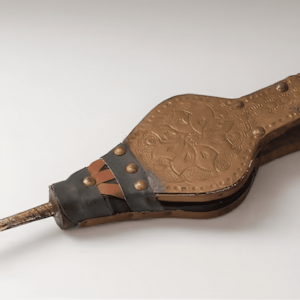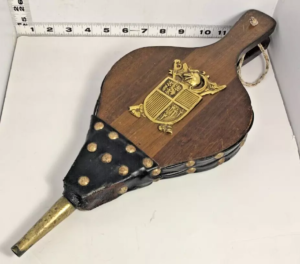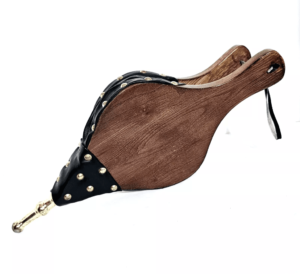The vintage fire bellows hand pump blower stands as a testament to the early innovations in firefighting. In an era before modern fire engines and advanced equipment, these hand-operated devices were crucial for controlling and extinguishing fires. Today, they are prized for their historical significance, offering a glimpse into the craftsmanship and ingenuity that defined 19th-century firefighting technology. In this article, we’ll explore the history, design, and legacy of this fascinating tool, and how it continues to capture the interest of collectors and historians alike.

The History of the Vintage Fire Bellows Hand Pump Blower
The fire bellows hand pump blower first appeared during the 19th century, a time marked by significant advancements in firefighting methods. Before fire engines became widespread, tools like the fire bellows were the frontline defense against small-scale fires. These devices originated in Europe, where they quickly gained popularity due to their simple yet effective design. Soon, they spread across the globe, becoming an essential tool in firefighting kits, especially in rural and industrial settings.
In the 1800s, firefighting was often a community effort, with minimal resources available to suppress flames quickly. The fire bellows, designed to deliver controlled blasts of air, helped manage fires by stoking or extinguishing them, depending on the situation. While larger fires required more substantial equipment, the bellows were indispensable for smaller incidents, such as those occurring on ships, farms, or in workshops. This portability and versatility made them a go-to tool for fire management before the development of modern fire engines and water hoses.
Design Innovations of the Fire Bellows Hand Pump Blower
The design of the vintage fire bellows hand pump blower is both straightforward and innovative. The core component is a large, air-tight bellows that connects to a hand pump mechanism. When operated, the bellows expels a strong, focused stream of air. This air is then directed at a fire to manipulate oxygen levels, either fueling the flame for control or helping extinguish smaller blazes. The hand pump allowed for a concentrated blast of air, making it easier to direct airflow precisely where needed.
The materials used in these early devices varied but often included wood, leather, and metal. The bellows themselves were typically made from durable leather, ensuring that the tool could withstand repeated use. Metal nozzles and hand grips were added for precision and ease of handling. Over time, these materials not only made the devices practical but also contributed to their longevity, which is why so many vintage fire bellows have survived today.
How the Fire Bellows Hand Pump Blower Was Used
The primary function of the fire bellows was to control airflow. By delivering a concentrated blast of air, the device could be used in two primary ways: to stoke fires or to blow out small flames. When a fire needed more oxygen to burn efficiently, the bellows would provide the necessary air to fuel the fire, making it easier to manage in a controlled manner. Alternatively, in situations where a fire threatened to get out of control, the device could be used to suppress it by directing strong bursts of air.
Firefighting in Rural and Industrial Areas
The vintage fire bellows were particularly valuable in rural areas, where firefighting resources were scarce. They were also used on ships, in factories, and in other industrial settings where the risk of fire was ever-present. Their portability and ease of operation made them an ideal solution in environments where larger equipment wasn’t practical or available. Firefighters or workers could carry the bellows by hand and deploy them quickly when fires broke out.
Legacy of the Vintage Fire Bellows Hand Pump Blower

Today, vintage fire bellows hand pump blowers have become prized collectibles. Firefighting enthusiasts and history buffs alike seek out these devices for their unique design and historical importance. Many collectors value them not just for their functionality but for the craftsmanship and innovation they represent. These devices serve as physical reminders of a time when firefighting was far more challenging, and every tool mattered in the battle against flames.
Influence on Modern Firefighting Technology
Although modern firefighting has advanced far beyond the need for hand bellows, the principles behind these devices remain relevant. Controlling airflow and oxygen levels is still a fundamental part of fire management. In fact, the evolution of firefighting equipment owes much to early tools like the fire bellows, which demonstrated the importance of manipulating airflow to either fuel or suppress a blaze. Today’s high-tech firefighting tools may look different, but their core function often echoes the purpose of these early devices.
The Role of the Fire Bellows in Firefighting History
The fire bellows hand pump blower is more than just an antique; it’s a symbol of the ingenuity that early firefighters brought to their craft. In an era when fires could easily spread out of control, tools like the fire bellows were essential for safeguarding communities and industries. The device’s simple yet effective design reflects the resourcefulness of those who relied on it, and its continued status as a collectible item highlights the ongoing fascination with early firefighting technology.

Beyond their role as collectibles, vintage fire bellows are also used in educational settings to teach about the history of firefighting. Fire museums, historical reenactments, and educational programs often feature these devices to demonstrate the challenges faced by firefighters in the past. They serve as a bridge between the old and the new, helping people understand how far firefighting technology has come and appreciating the innovations that have shaped modern fire safety.
Conclusion: The Timeless Importance of the Fire Bellows Hand Pump Blower
The vintage fire bellows hand pump blower remains a vital piece of firefighting history. Its simple design, effective functionality, and historical significance make it a fascinating relic of the past. While modern firefighting equipment has largely replaced these hand-operated devices, their legacy lives on in the principles of fire management and the ongoing appreciation for early technological advancements.
As both a collectible and an educational tool, the fire bellows hand pump blower stands as a testament to the ingenuity and resilience of those